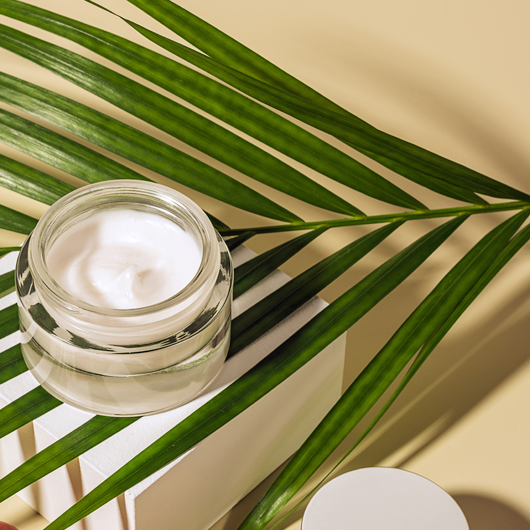One of these, the subject of this article, is microneedling. If you haven’t heard of this yet, that’s ok. We’re going to tell you all you need to know in the next couple of minutes. Plus, we include the most effective peptides to use in this process.

Aging is tough on the mind, body, and soul. That’s why there are stories and folk tales about the fountain of youth. It can be found in a mysterious corner of the world somewhere.
The truth is, there’s no real fountain of youth, or at least not one that’s ever been discovered. Don’t fret, though, because there are other things you can do to slow down the aging process that causes so many visible signs of getting older on your face.
What Is Microneedling?
The basics of microneedling are that many tiny, fine needles are used to make tiny little puncture wounds in the skin. The injury then elicits your skin's reaction to regenerate skin cells through elastin and collagen, rejuvenating it restoring a more youthful look.
The procedure is performed with a derma roller. There is a wheel at the end that has the needles going all the way around it. The device is placed against the skin and rolled in different areas after an anesthetic has been applied.
What Does Microneedling Do?
-
Improves Collagen Support: Microneedling works by creating tiny punctures in the skin, which triggers the body's natural regeneration process. This process stimulates collagen and elastin production, proteins essential for maintaining skin elasticity and firmness. Increased collagen can help reduce the appearance of fine lines and wrinkles, giving the skin a more youthful appearance.
-
Improves Skin Texture and Tone: Regular microneedling sessions can lead to smoother skin texture and more even skin tone. It can help diminish the appearance of pores, acne scars, and other textural irregularities, resulting in a smoother and more refined skin surface.
-
Enhances Product Absorption: The micro-channels created by microneedling improve the absorption of topical skincare products. This enhanced penetration allows anti-aging serums and creams to work more effectively, boosting their benefits.
-
Reduces Hyperpigmentation and Photoaging: Microneedling can help in reducing hyperpigmentation and sunspots. By encouraging the turnover of the skin cells, it helps in fading dark spots and evening out skin tone, which is often affected by photoaging.
-
Minimizes Scarring and Stretch Marks: Apart from its anti-aging benefits, microneedling is also effective in reducing the appearance of scars, including acne scars, and stretch marks. It breaks down old tissue and stimulates the production of new, healthier skin cells.
While microneedling is a beneficial anti-aging treatment, it's important to consult with a skincare professional to determine if it's the right option for your skin type and concerns.
How Often Should I Microneedle?
Typically, there are between four and six sessions performed at an interval of every other month. The treatments get a little more intense as you move through the process. Each session, the needles will poke further down into your skin. This is because your skin should be getting healthier, firmer, and more resilient.
There are some devices or kits that can be used at home to do your own microneedling procedure. If you decide to try doing it yourself, you should stick to this same timeline, as that’s what has been set based on research.
Serums for After the Procedure
Once the derma roller has been used, a serum will be applied topically to your skin. This may cause some irritation, especially if you have sensitive skin. The procedure will exacerbate the level of sensitivity you already have. The ingredients in the serum will quickly get down deeper into the skin because of the punctures. The irritation is relatively typical but something to be aware of.
When choosing a serum for using after microneedling, you want to look for one that will have the most effective peptides ingredients to promote the production of collagen and elastin. After all, this is the whole reason you were doing this procedure in the first place. So let’s take a look at some.
- Hyaluronic acid-based serum – This is good because it hydrates your skin, which it will need once the derma-rolling is done. This type of serum holds so much water that it will improve any dry, flaking skin thing you have going on anywhere. The microneedling procedure allows the hydration to get even deeper into your skin, too, so this will work wonders.
- Vitamin C serum – If you’re looking to brighten up your skin and have it look less dull, then Vitamin C can do that. Use caution when you’re choosing one, though. Some aren’t very stable, so they will lose effectiveness when exposed to light, heat, or air in general. Find a suitable stable version that’s in a dark bottle and has a pump that doesn’t have to be opened up for dispensing.
- Glycerin – This is an ingredient found in serums that helps to hydrate the skin. It’s often blended with other ingredients that work to stimulate collagen production.
- Amino acid peptides– These peptides (proteins) help the skin produce collagen and elastin. They make the surface more durable and help it regain its elasticity and firmness.
- Ceramides – This substance is part of your skin’s top layer. It’s about half of that layer. These are fatty acids that the skin uses to heal itself and hold its moisture. A serum that has ceramides in it gives skin back its defense system.
- Zinc – This has anti-inflammatory and anti-bacterial properties that help your skin to heal. The top layers of your skin will be inflamed after microneedling. A serum with zinc in it will help calm it back down and start the rejuvenating process faster.
Which Anti-Aging Ingredients Are the Best for Microneedling?
You'll find some common ingredients listed in some of the products used before and after having microneedling done. Here are three of them that you want to look for if you’re trying to turn back the clock on your aging process.
- Epidermal Growth Factor (EGF) – EGF is a single-chain protein that is naturally already in our skin. It helps with regenerating your complexion. It protects the skin from free radicals. With 53 amino acids to nourish, it is needed for skin to look younger and more supple.
- Human Growth Hormone (HGH) – There’s been a lot of research into HGH over the last decade about how it affects skin aging and your appearance. Human Growth Hormone can be ingested, injected, or applied with a spray. However, more and more products emerge where it can be applied in a cream or other form. While it may work to stimulate the production of useful proteins like collagen, it’s vital that you use a product from a reputable source and that you discuss it with a medical professional first.
- Copper Peptides – Proteins that are found mainly in the blood. They can also be in saliva and urine in the body. These work very well for increasing the production of elastin and collagen. They also have antioxidant properties, and they stimulate the production of other useful substances for anti-aging purposes, like hyaluronic acid.
Microneedling vs. Rose Quartz Roller
Our final thought is a comparison between these two methods. Microneedling, if nothing else, allows the right products you apply afterward to penetrate down deep into your skin. Rose quartz rollers don’t do that. While they can help reduce fine lines appearance and puffiness, it’s temporary and not a miracle cure like people seem to think.
Microneedling and using a rose quartz roller are both popular skincare techniques, each offering unique benefits.
Five Key Advantages of Microneedling Compared to a Rose Quartz Roller
-
Enhanced Collagen Production: Microneedling is known for its ability to stimulate the production of collagen and elastin, which are crucial for skin elasticity and firmness. The tiny needles create controlled micro-injuries to the skin, triggering the body's natural regeneration process, resulting in increased collagen support. In contrast, a rose quartz roller primarily offers surface-level skin benefits and does not significantly impact collagen.
-
Improved Skin Texture and Reduction of Scars: Microneedling is highly effective in improving skin texture and reducing the appearance of scars, especially acne scars. The process promotes skin regeneration, which can smooth out the skin's texture and diminish scar visibility. A rose quartz roller, while soothing and beneficial for lymphatic drainage, does not have a significant impact on deep skin texture and scars.
-
Better Product Absorption: Post-microneedling, the skin can absorb skincare products more efficiently. The micro-channels created by the needles allow for deeper penetration of serums and creams, enhancing their effectiveness. A rose quartz roller helps with surface-level absorption and product distribution but does not enhance deep skin penetration like microneedling.
-
Reduction of Fine Lines and Wrinkles: Microneedling is particularly effective in reducing the appearance of fine lines and wrinkles. By stimulating collagen and elastin production, it helps in naturally firming and plumping the skin, thereby reducing signs of aging. The benefits of a rose quartz roller in this regard are more related to improving circulation and puffiness, rather than directly targeting wrinkles and fine lines.
-
Targeted Treatment for Various Skin Issues: Microneedling can be tailored to treat various skin issues, from wrinkles and hyperpigmentation to stretch marks. By adjusting the needle depth, professionals can target specific skin layers to address different concerns. On the other hand, a rose quartz roller is more of a one-size-fits-all tool, primarily used for de-puffing, improving circulation, and relaxation.
In summary, while both tools have their place in skincare routines, microneedling offers more profound and targeted benefits for skin rejuvenation, collagen production, and the treatment of specific skin concerns compared to the more superficial effects of a rose quartz roller.
Resources:
https://www.healthline.com/health-news/microneedling-latest-craze-in-skin-care#1
https://www.webmd.com/beauty/qa/how-does-copper-peptide-affect-the-skin
https://www.realsimple.com/beauty-fashion/what-do-jade-rollers-do-for-your-face
Written by Sara Katharine Creamer
Licensed Esthetician








